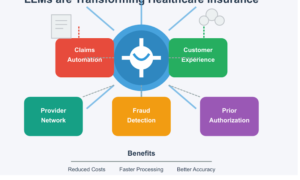The convergence of technology and insurance is becoming even more fascinating, lucrative and beneficial for all involved. Embedded insurance is part of a larger movement toward embedded finance and is key to creating opportunities for more affordable, relevant and personalised insurance for people when they most need it, according to FinTech Futures.
In fact, according to the article, based on current valuation multiples of leading insurtechs of five to seven times gross written premium today, businesses that enable embedded insurance could be worth $3-5 trillion in ten years time.
According to the study, embedded insurance could account for over $700 billion in global gross written premiums by 2030 just in property and casualty insurance alone, which would be 25% of the worldwide market. Embedded insurance could also serve to assist in closing the global insurance protection gap.
“All players – insurers, banks, fintechs, investors, non-financial retailers, product manufacturers, service providers, digital platforms and software companies – should look carefully at this fast-emerging space and define strategies of ‘where to play’ and ‘how to win’,” according to the report.
Insurance executive and insurtech entrepreneur Neil Mitchell explained that people often have a love-hate relationship with insurance.
“They know they need it — without it, they wouldn’t be able to finance the purchase of a car, or secure a mortgage for the purchase of a home, or cover the cost of out-of-country medical expenses. And yet, it’s often an afterthought, a necessary evil. Everyone needs insurance, however most people do not always realise they need it until it is too late,” he said.
The report breaks down what the global insurance protection gap is: “The gap between the amount of insurance that is economically and socially beneficial for individuals, households and firms and the amount of coverage actually bought.”
That gap has been growing significantly. In fact, from 2000 until 2022, the protection gap doubled, driven by trends in “digitisation, urbanisation, climate change and lack of effective innovation,” according to the report.
The Geneva Association, an international think tank, estimates that the gap is over $20 trillion worldwide in private pensions alone: most people cannot afford to comfortably live to old age.
“And if the main family breadwinner dies today the majority of humanity is not able to maintain its living standards and repay debts. The COVID crisis has exposed and exacerbated this situation,” according to the report.
Many in the insurance industry have seen the writing on the wall for some time, according to Mitchell. “It has been a concern for years, but data and the increasing frequency and severity of natural catastrophe events are showing that the global insurance protection gap could cripple people, communities, and countries,” he said. “It is disconcerting and is now demanding attention in a profound way. It is an issue that must be addressed before it is too late.”
Embedded insurance is an innovative, creative and cost-effective way of addressing this issue as it brings demand and supply for risk transfer solutions together with minimal effort by the consumer,” he explained.
In addition to confronting the global insurance protection gap, embedded insurance is set to benefit a number of industries, helping insurers create a lower cost distribution channel to reach more firms and individuals, and “access to more data to enhance product innovation and reduced underwriting risks.” As well, third party organisations (service providers, manufacturers and retailers) can create new revenue streams and enhance value propositions, and insurtech investors and tech entrepreneurs will be presented with opportunities to create new ventures.
“As technology continues to evolve, we will be presented with more and more opportunities to utilise embedded insurance solutions to increase insurance protection and in so doing reduce the global insurance protection gap amongst individuals, businesses and communities,” Mitchell said.
He explained that bringing insurance protection directly to the consumer at the point of sale with an embedded insurance solution is one way of repositioning insurance as a “must-have” purchase.
“Embedded insurance is a flexible model in which insurance coverage is offered alongside a product or service purchase. As a result, the customer doesn’t have to go looking for coverage, as they may not even know they need it until they’re offered the opportunity as part of a bundled, friction free buying experience,” explained Mitchell.



































